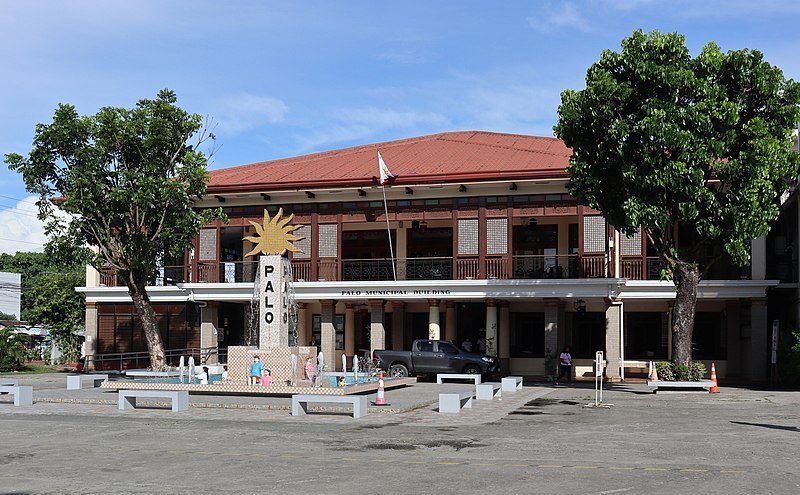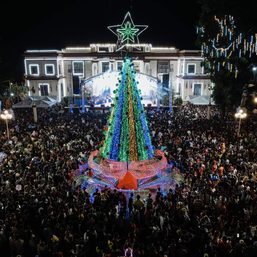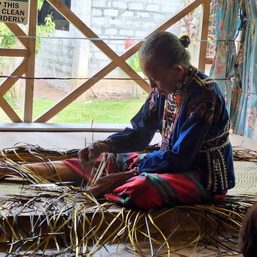SUMMARY
This is AI generated summarization, which may have errors. For context, always refer to the full article.

LEYTE, Philippines – The historic town of Palo, the seat of government in Leyte during the Spanish and American colonial periods, is currently showcasing its rich gastronomy and culture.
The “An Kultura Ha Pagkaon ha Palo: A Learning Conference on Palo, Leyte Gastronomy” at the historic municipal building started on Wednesday, March 6, and will continue until Friday.
In a vibrant display of culinary tradition and community spirit, local cooks presented an array of flavorful dishes at a recent community cooking workshop.
Among the highlights was hinatukan na manok, a fragrant native chicken stew infused with a medley of ingredients including ginger, onion, papaya, coconut milk, chili, and turmeric leaves.
Another standout was lawot-lawot, a traditional dish bursting with mountain-fresh flavors, featuring a colorful assortment of taro leaves, fern leaves, sweet potato leaves, red spinach leaves, and wild mushrooms.
Guests also indulged in suman arasip, a well-loved delicacy crafted from sago arrowroot flour, offering a delightful blend of texture and taste.
Meanwhile, the crowd savored moron, a delectable treat combining glutinous rice flour, coconut milk, sugar, and cocoa powder, creating a symphony of sweetness and richness.
Kinarabong pako took the spotlight, featuring fern leaves in a dish that celebrated both local ingredients and culinary heritage.
The culinary showcase not only delighted taste buds but also celebrated the rich mosaic of flavors and traditions within the community.
History-rich town
The event’s venue is the old Palo municipal building, which has become an icon of the town. It is a well-preserved building that once served as the seat of power in Leyte.
Palo was declared twice as the provincial capital before Tacloban City served as Leyte’s administrative seat. The first declaration was in 1768, and the second on April 22, 1901, when the American forces established a civil government.
The town is only a 15-minute drive from Tacloban City, approximately 14 kilometers away.
One of the town’s guests, Culinary Arts Historians of the Philippines President Ige Ramos, described the municipal hall of Palo, Leyte as “one of the cleanest, most beautiful, and well-planned municipios” that he has seen in the entire country.
“This is what good housekeeping and good governance are all about,” said Ramos, who is also the chairperson of the Ugnayan Center for Filipino Gastronomy.
The old building is just across the town’s plaza and the century-old Palo Metropolitan Cathedral, the seat of the Archdiocese of Palo.
Leyte officially transferred the provincial seat of government from Tacloban City to Palo in 2022, after the construction of the new provincial capitol along the Palo west bypass road. Tacloban was a component city of Leyte and the province’s capital until it was declared a highly urbanized city in 2008.
Palo now serves as the regional capital of Eastern Visayas, hosting various regional offices in Barangay Pawing.
The town’s history is rich. It is where American forces landed on October 20, 1944, to liberate the Philippines from Japanese occupation. It marked the fulfillment of the vow of the commander of the United States Armed Forces in the Far East (USAFFE), General Douglas MacArthur, who promised, “I shall return.”
Setting its rich history aside, the enticing local food and the beautiful and historic municipio of Palo, Leyte are among this town’s treasures from the past, that make visitors come back for more. Locals always say, “Once you see Palo, Leyte, you shall return.”
Preservation and revival
Former Leyte governor and now Palo Mayor Remedios “Matin” Petilla emphasized the importance of learning and preserving their town’s identity through food. She said she was hopeful that “one day, people will come to Palo not just for the beautiful tourist attractions but for their tasty food.”
Laorence Castillo, a freelance chef and food and beverage consultant, described the event as a remarkable experience for him, saying he was introduced to local ingredients such as asarip flour – a starchy substance extracted from palm trees – and other local delicacies during their market and community hoppings, and carenderia stops.
He said he learned about Leyte’s food traditions and techniques such as pairing boiled root crops with meat dishes and using coconut milk in various ways.
“Most admirable is how the people revive their food heritage after the widespread devastation of Yolanda (Super Typhoon Haiyan) a decade ago. Sobrang saya ko sa inisyatiba at excitement ng mga local cooks na ibahagi ang kanilang mga lutuin sa community cooking workshop (I am so happy with the initiative and excitement of the local cooks to share their dishes in the community cooking workshop),” he said.
Super Typhoon Yolanda devastated many areas in the Philippines, causing widespread destruction, loss of life, displacement of communities, and significant damage to infrastructure and livelihoods in 2013. It was one of the most powerful typhoons to ever hit the country in recent years. – Rappler.com
Gerardo C. Reyes Jr. is a community journalist at Palawan Daily News and is an Aries Rufo journalism fellow of Rappler for 2023-2024.
Add a comment
How does this make you feel?

















![[OPINION] From ‘Puyat’ to ‘Tulog’: Clout-chasing street signs disrespected history](https://www.rappler.com/tachyon/2024/07/gil-puyat-july-26-2024.jpg?resize=257%2C257&crop=389px%2C0px%2C1080px%2C1080px)


![[Time Trowel] Yamashita gold is a myth, and treasure hunting is not archeology](https://www.rappler.com/tachyon/2024/06/myth-yamashita-treasure-june-14-2024.jpg?resize=257%2C257&crop=435px%2C0px%2C1080px%2C1080px)
There are no comments yet. Add your comment to start the conversation.